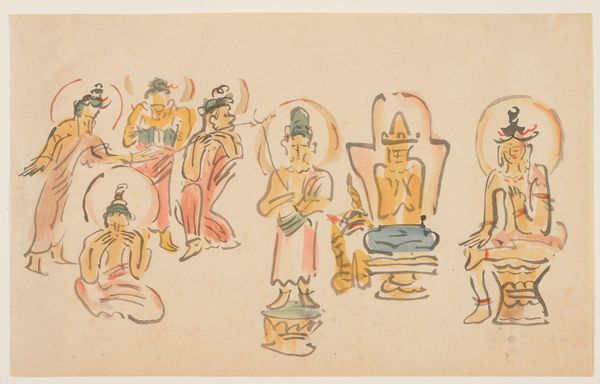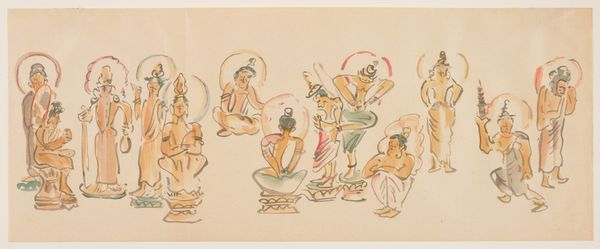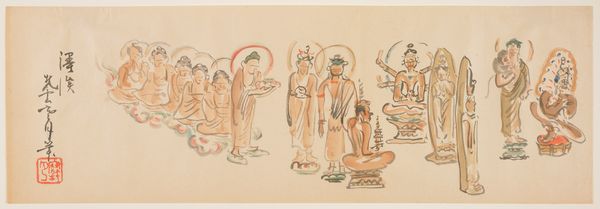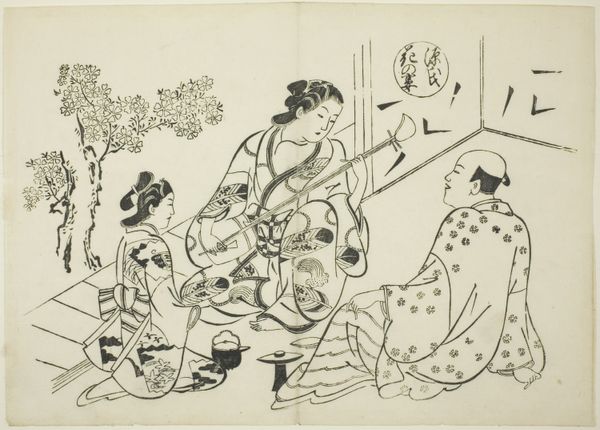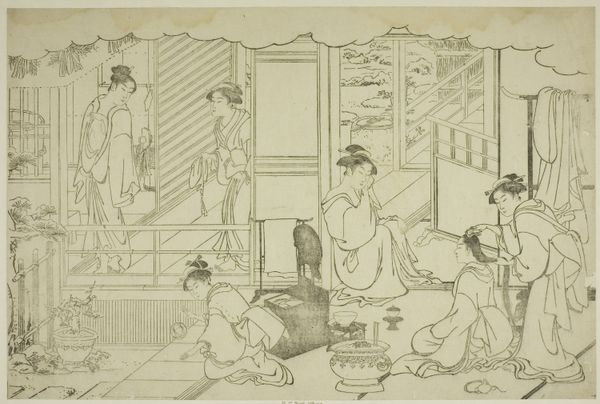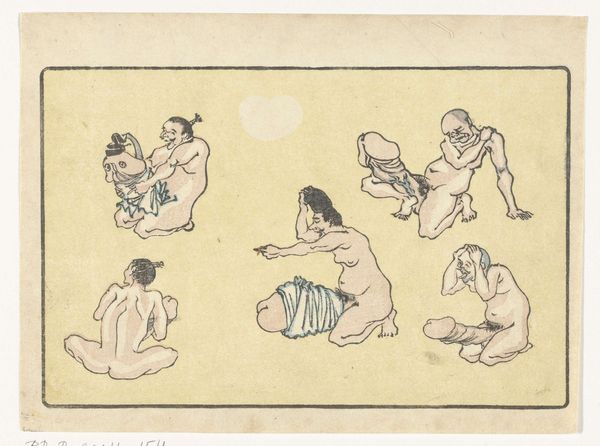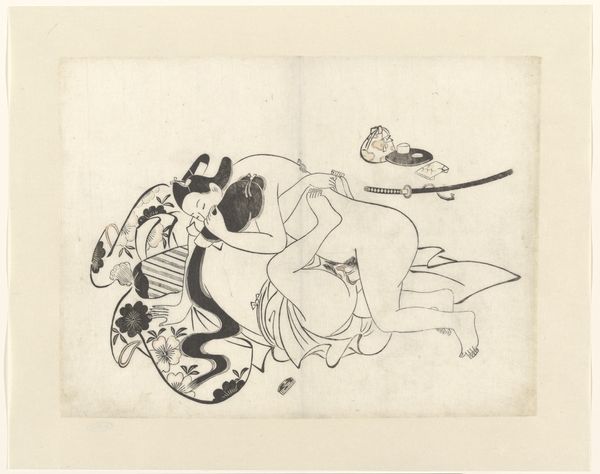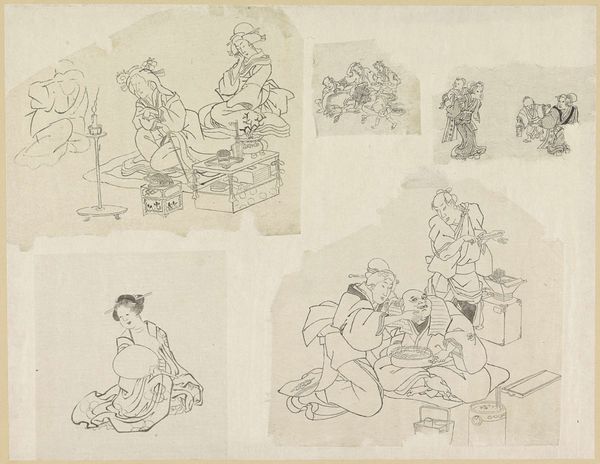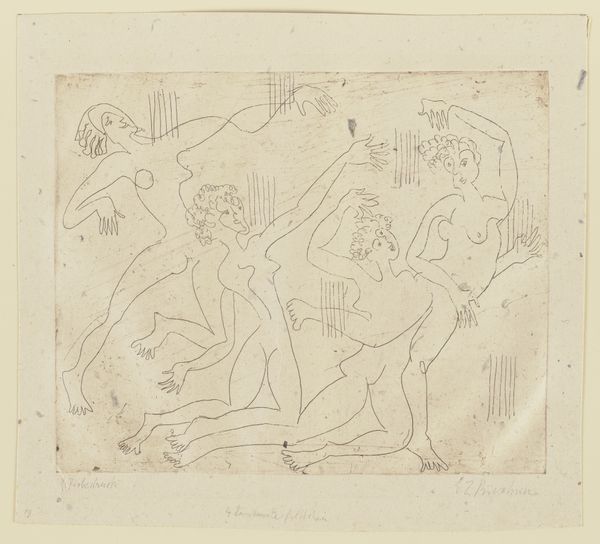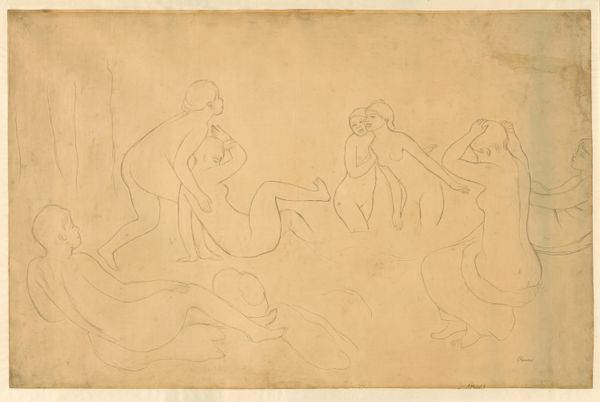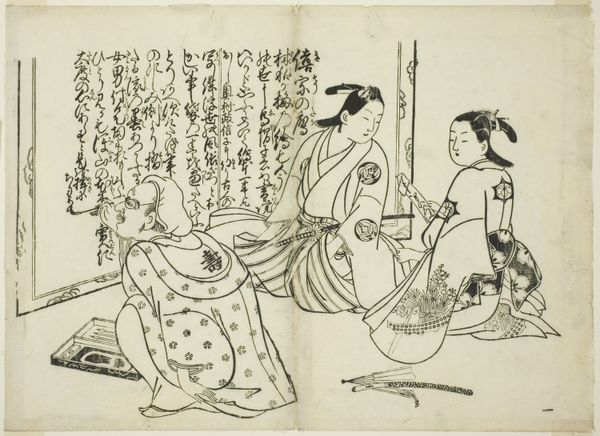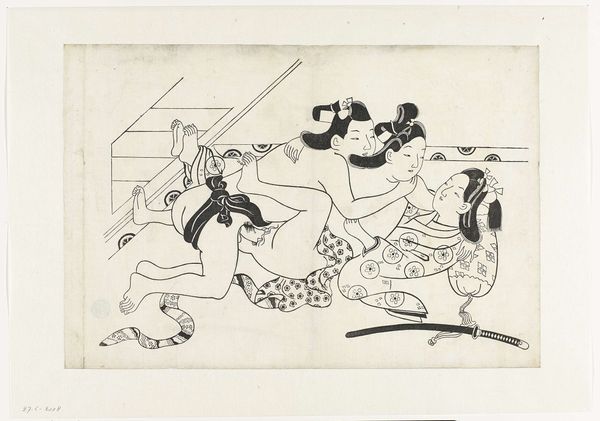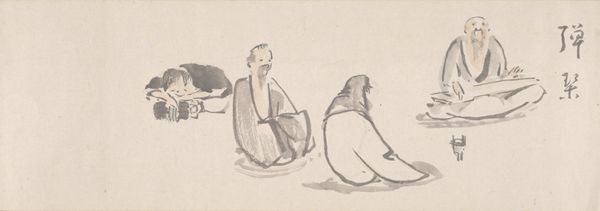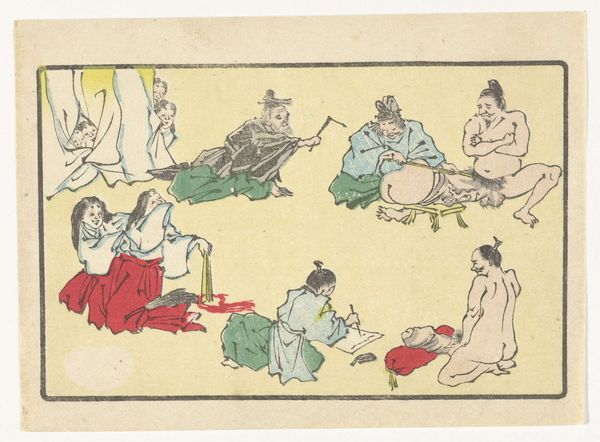
Dimensions: 8 5/8 x 20 3/8 in. (21.9 x 51.8 cm) (image, sheet)
Copyright: Public Domain
Curator: This work, titled "(Asakusa Kannon temple caricatures B)," was created around 1900 by Awashima Kangetsu. It's a woodblock print rendered with ink and watercolor, a fantastic example of Ukiyo-e currently residing here at the Minneapolis Institute of Art. Editor: It’s remarkably…delicate. The lightness of the watercolor gives an almost ethereal quality to the figures, despite the caricatured forms. I see an ordered yet spontaneous rhythm of repeated circular haloes. Curator: Absolutely. What strikes me is the context of its production. At the turn of the century, there was increasing commercialization of religious iconography. These caricatures were likely mass-produced, reaching a wider audience, reflecting and shaping popular perceptions. This blending of art, commerce, and religious observance really challenges traditional art boundaries. Editor: The economical line work and diluted palette contribute significantly. It’s the restraint that accentuates form. Note how subtle shifts in hue, barely registering, still manage to differentiate the individual figures within the composition. Semiotically, these visual cues point to individual deities within a unified field. Curator: Consider the woodblock printing process itself – the labor involved in carving each block, the number of impressions possible. It connects us to the artisans and vendors involved, making visible the systems of labor and distribution integral to the work's accessibility. What do you make of the varied poses? Editor: Fascinating. They almost tell a narrative. You’ve got figures in meditative stances, some reclining, others seemingly in mid-gesture. There's a flow, a visual poem about reverence, and also, dare I say, human experience? I suppose it captures devotion, but without grandiosity. Curator: Precisely. The commercial nature lessened formality. I would say, thinking about it now, it’s a valuable example of accessible artistry for its time, deeply rooted in its social and material conditions. Editor: And seen from this angle, we see the formal arrangement and the economical rendering, coming together, presenting this particular blend of serenity and humour to us still.
Comments
No comments
Be the first to comment and join the conversation on the ultimate creative platform.
